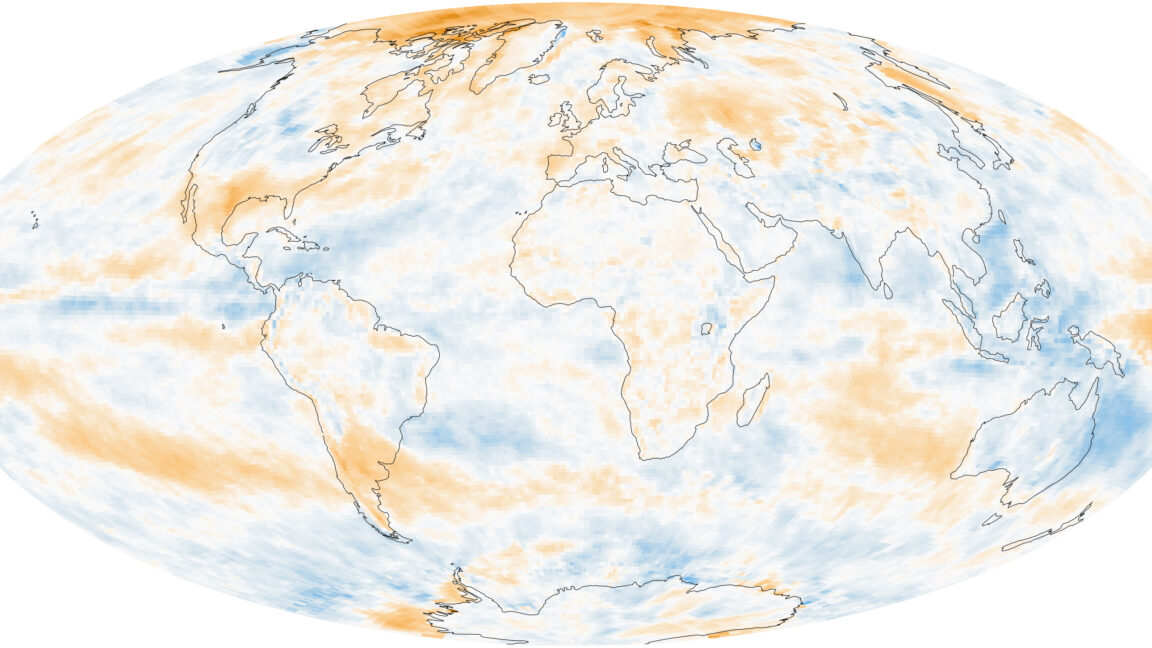2023 was always going to be a hot year, given that warmer El Niño conditions were superimposed on the long-term trend of climate change driven by our greenhouse gas emissions. But it’s not clear anybody was expecting the striking string of hot months that allowed the year to easily eclipse any previous year on record. As the warmth has continued at record levels even after the El Niño faded, it’s an event that seems to demand an explanation.
On Thursday, a group of German scientists—Helge Goessling, Thomas Rackow, and Thomas Jung—released a paper that attempts to provide one. They present data that suggests the Earth is absorbing more incoming sunlight than it has in the past, largely due to reduced cloud cover.
Balancing the numbers on radiation
Years with strong El Niño conditions tend to break records. But the 2023 El Niño was relatively mild. The effects of the phenomenon are also directly felt in the tropical Pacific, yet ocean temperatures set records in the Atlantic and contributed to a massive retreat in ice near Antarctica. So, there are clearly limits to what can be attributed to El Niño. Other influences that have been considered include the injection of water vapor into the stratosphere by the Hunga Tonga eruption, and a reduction in sulfur emissions due to new rules governing international shipping. 2023 also corresponds to a peak in the most recent solar cycle.




